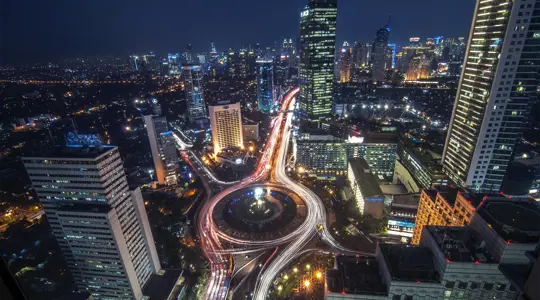Indonesia’s construction sector finds its footing
Amid global challenges, Indonesia’s construction sector is holding strong. Local businesses are driving momentum, data centres are thriving and a quiet confidence is shaping the outlook for 2025, despite rising costs and shifting competition.
Resilient in the face of global volatility
Indonesia’s construction industry entered 2025 facing challenges. Activity had slowed compared to previous years, with tighter financing conditions, geopolitical and economic uncertainty and evolving investor sentiment tempering growth.
However, some sectors remain active and local developers continue to push forward with new projects, reflecting a steady undercurrent of confidence.
Supporting this cautious optimism is Indonesia’s solid economic fundamentals. The World Bank projects GDP growth between 4.6 and 5.4 percent in the second half of 2025, driven by robust domestic demand and continued investment in infrastructure.
In terms of cost, Indonesia remains one of Asia’s more competitive construction markets. The average cost to build in Jakarta is USD$ 942.8 per m2, placing it 91st globally and 15th among the 22 Asian markets. This is according to our Global construction market intelligence report.
Inflation remains moderate at around three percent in 2024, with similar levels expected throughout 2026. Overheads and profits typically range from 10 percent for smaller projects and seven percent for larger builds, with preliminaries between five and seven percent.
While Indonesia offers a relatively low-cost base, it’s not immune to global price volatility or external shocks that could impact project budgets in the months ahead.
Data centres as an evolving sector
Data centres continue to be a growth driver in Indonesia’s construction sector. Demand is strong, driven by the country’s expanding digital economy and Southeast Asia’s growing cloud infrastructure needs.
However, tender prices in the sector have risen, driven by inflation and Indonesia’s dependence on imported high-quality materials and specialised equipment. The country’s inability to produce many of these components locally at the required scale means developers rely on imports that drive up project costs.
To stay competitive, clients and contractors are embracing value engineering, transparent cost reporting and early-stage planning.
A notable shift is the growing capability of local contractors, who are increasingly securing large-scale data centre projects once dominated by international firms. This marks a significant step in technology transfer and local expertise development. However, it also heightens competition, tightens margins and presents new challenges for larger regional and global players.
The private sector and appetite for growth
Private sector investment has been mixed in early 2025. Many global and regional firms remain cautious, focusing on core capabilities, like project and construction management. This reflects the need for cost discipline amid thin margins and uncertain market conditions.
In contrast, appetite for development among Indonesia’s local private developers is high. Our experts see a growing willingness among local businesses to initiate new projects, albeit cautiously.
In Jakarta, this is reflected in a split market response, with developers that have strong finances and pre-committed support moving forward with plans, while others are waiting. Meanwhile, in Bali, activity in hospitality projects continues, supported by rising tourism and improving investor sentiment.
This interest from developers creates opportunities for differentiation, where consultancies that can deliver tailored services, build local partnerships and adopt agile delivery models are well positioned to support local developers seeking value beyond traditional scopes.
While overall activity in the private sector remains moderate, these shifts hint at pockets of potential growth.
Cost challenges and persistent pressures
Indonesia’s construction sector has grown more resilient, shaped by lessons learnt during past disruptions like COVID-19. Improved supply chain management and adaptive strategies have left the industry better prepared for new challenges, including the upcoming US reciprocal tariffs.
While the direct impact of these tariffs may be limited, there are concerns about ripple effects on specialised equipment and imported materials, particularly in high-spec sectors like data centres. Still, many believe the sector’s recent adaptability will help absorb potential shocks.
Meanwhile, the market faces a persistent shortage of skilled professionals, particularly in technical and management roles. Addressing this gap is critical to ensure sustainable growth.
Outlook ahead
Looking ahead, Indonesia’s construction sector is expected to remain steady throughout the second half of 2025. Tendering conditions are balanced, and both local and foreign contractors continue to explore new opportunities.
The key growth sectors are data centres, transport infrastructure and sustainability-focused projects. However, navigating rising costs, global trade uncertainties and shifting competitive dynamics will require agility, foresight and strategic collaboration.
While Indonesia’s construction sector isn’t surging ahead, it is proving to be resilient. With local confidence, strong sectoral demand and a competitive cost base, the industry is well-positioned to sustain momentum, tackle global challenges and drive growth.

